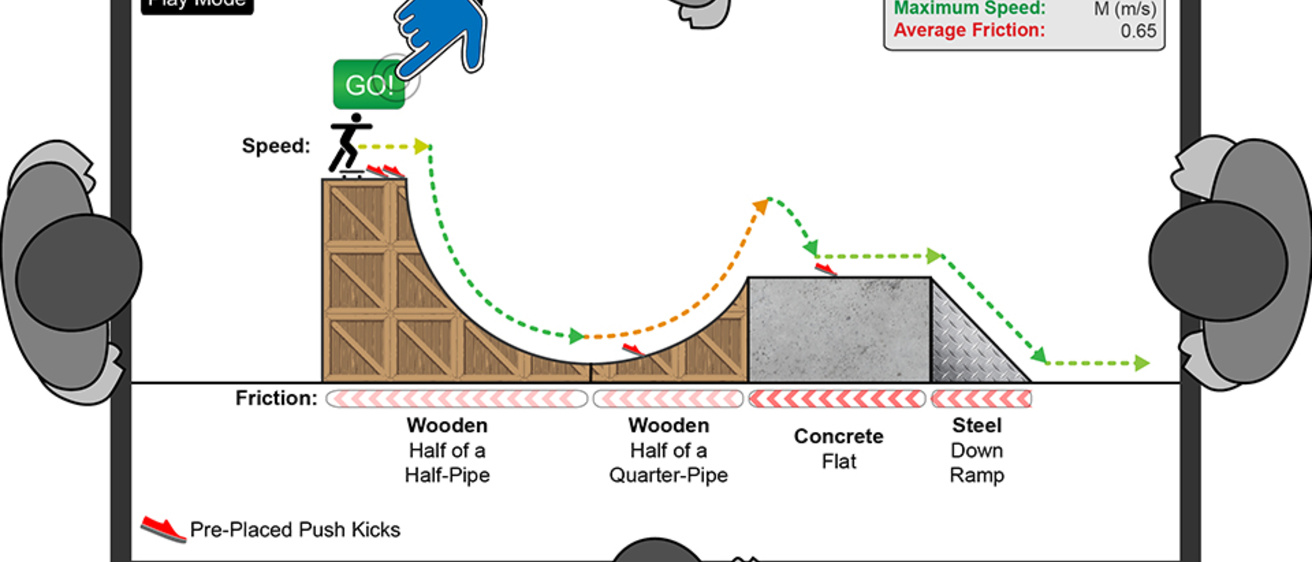The University of Iowa has partnered with the Iowa Children’s Museum to produce a new hands-on exhibit that will use an interactive skate park concept to teach physics principles.
The 3,000-square-foot exhibit, scheduled to open in 2018, will invite children to design their own skateboarding courses and platforms using both virtual and physical building blocks. Funded by a three-year, $1,275,430 grant from the National Science Foundation (NSF), it will become a permanent fixture at the museum, located in the Coral Ridge Mall in Coralville, replacing another physics-based exhibit called “Notion of Motion.”

Benjamin DeVane, an assistant professor of education psychology and learning sciences in the UI College of Education, is a co-principal investigator on the NSF grant, along with former UI faculty member Kristen Missall, now an associate professor of school psychology at the University of Washington.
DeVane says the goal of the exhibit is to encourage 5- to 8-year-old kids and their families to learn about physics through games and play. Studies show children’s interests are heavily influenced by those of their parents, so it’s especially important for parents and adult mentors to play alongside them, he says.
“We want to make a small difference in terms of how families and children engage in STEM topics,” he says. “The skate park will be something families can design and interact with together.”
Though DeVane’s research includes game-based learning, this will be the first time he’s helped create an exhibit for a museum.
“It will be exciting because it has to be really inviting play,” he says. “Five- to 8-year-olds don’t want to sit through instructions, so it will be an interesting design challenge.”
Deb Dunkhase, executive director of the Iowa Children’s Museum and principal investigator on the grant, says after playing with the exhibit, visitors will be able to take their creations home by downloading an app.
“Once kids design their skate parks, they will be able to post their designs and information about what they tried—what worked and what didn’t—on the museum website,” Dunkhase says. “It’s a very cool experience for kids to test and redesign and retest, which is exactly what we want them to do in the scientific process.”
Dunkhase says another goal of the grant is to adapt existing STEM program success guidelines developed by the PEAR Institute at Harvard University for other museums and science centers to use in the development of their own hands-on, STEM-based exhibits. In Iowa, the Governor’s STEM Advisory Council already has been using the guidelines to help educators improve the quality of STEM programs across the state.
“I think this is going to be a tremendous asset to the Iowa Children’s Museum and to the greater community,” she says.
The Iowa Children’s Museum, which opened in 1999, offers unique, hands-on educational components within a 28,000-square-foot active learning landscape that promotes exploration, creativity, problem solving, and discovery. All of the exhibits build skills that correlate to one or more of the museum’s five educational initiatives: arts and culture, financial literacy, healthy kids, school readiness, and STEM.
